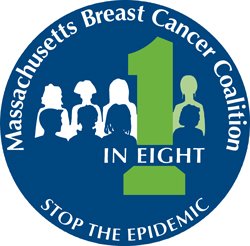Water Concerns Go Beyond Nitratesby Laurel Schaider, Silent Spring Institute research scientist
A recent environmental summit organized by the Association to Preserve Cape Cod concluded that nutrient pollution is the most important environmental issue on Cape Cod. The problems caused by nutrients in Cape groundwater are apparent. Nutrients, especially nitrate, are causing excessive growth of algae in coastal waters and ponds, choking out plants and animals, and diminishing fish habitats. Household wastewater, primarily from septic systems, is the largest source of nitrate into Cape groundwater. However, nutrients are not the only contaminants leaching from household wastewater into the Cape environment. Wastewater contains everything that goes down our drains and toilets. It contains chemicals in personal care products, such as detergents and shampoos, and chemicals added to make household products flame resistant, fresh smelling and germ-free. In addition, wastewater contains chemicals that our bodies excrete, including hormones, produced naturally and found in birth control and hormone replacement therapies, and other pharmaceuticals, many of which pass through our bodies without being entirely absorbed. Some of these “emerging contaminants” can act as endocrine disruptors, which mimic the behavior of estrogens and other hormones. My own research at Silent Spring Institute and earlier studies show these contaminants are widespread in Cape drinking water, groundwater and ponds. Our recent studies have found pharmaceuticals, consumer product chemicals, including perfluorinated chemicals used in nonstick and stain-resistant products, and other emerging contaminants in 75 percent of the public drinking water wells and 85 percent of the private wells that we tested throughout the Cape. Public wells and ponds in more heavily populated areas had higher levels of emerging contaminants. So did drinking water wells with higher levels of nitrate, even at levels well below the federal drinking water standard for nitrate. Nitrate is regulated in drinking water because high levels can be harmful to infants, but it is also an important indicator that the water may contain emerging contaminants, too. These contaminants need to be part of the planning to protect the Cape’s environment along with nutrient reductions. The presence of emerging contaminants alone does not mean they are harmful, and the levels of pharmaceuticals typically found in Cape groundwater are much smaller than the doses used in medicines. However, while we are exposed to complex mixtures, scientists usually study just one chemical at a time, and we do not yet understand how low levels of many different compounds may interact with one another, especially during sensitive stages of development before birth and in children. Endocrine disruptors can show effects at lower doses that are not apparent at higher doses. Although emerging contaminants are not currently regulated in drinking water, the Environmental Protection Agency is considering some of them for future regulation. As we work to fill gaps in our understanding of the health effects of emerging contaminants, it is wise to find ways to minimize exposures. While areas that are sources of nutrients into impaired coastal systems are currently the priority for sewers, concerns about emerging contaminants suggest that areas close to drinking water supplies should also be priorities. In addition, while centralized treatment plants generally do a better job of removing emerging contaminants than septic systems, all wastewater discharges will contain emerging contaminants. Some Cape residents favor alternatives to sewers such as eco-toilets and cluster systems; less is known about how these alternatives will address emerging contaminants. Evaluating inputs of emerging contaminants to Cape groundwater under current and proposed treatment scenarios is one of the goals of Silent Spring Institute’s next Cape study. All Cape residents rely on groundwater as a source of drinking water, and all Cape wastewater is discharged into that same groundwater. Minimizing wastewater chemicals in drinking water means prioritizing zones of contribution for public and private wells for sewers or advanced on-site treatment and avoiding new wastewater discharges in these zones. Protecting the quality of Cape drinking water will require a concerted effort to minimize the impact of wastewater contaminants. What is at stake involves far more than just nitrate, and the solutions may have implications for the health of all Cape residents. Laurel Schaider is a research scientist at Silent Spring Institute in Newton (MBCC’s sister organization) and leads the institute’s studies of water quality on Cape Cod. This piece was originally published in the Cape Cod Times. |
